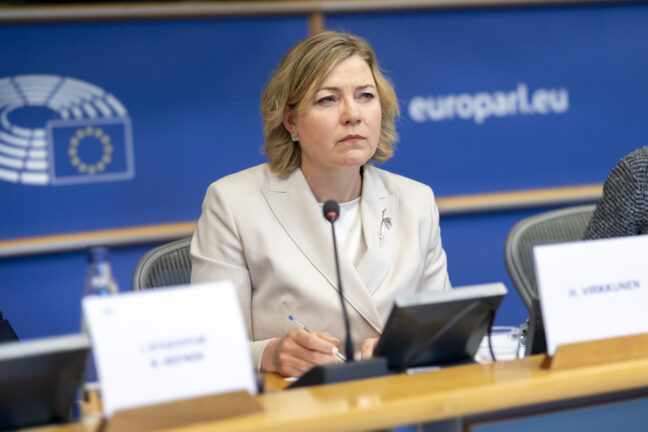The EU’s Roam Like at Home policy, a flagship achievement since 2017, is due for a review in 2026. Rising data use, technological shifts, and geopolitical developments have put the policy under pressure unanticipated at the time of its conception.
In the European Union, where the ideal of free movement is both a foundational promise and a political battleground, few measures have embodied the the integration project as effectively—and as visibly—as the Roam Like at Home policy. Launched in June 2017 to great fanfare, the initiative eliminated retail roaming surcharges for mobile phone users traveling within the EU, EEA, and associated states. As the EU prepares to include Ukraine and possibly Moldova in the scheme, the 2026 review will be pivotal for the future of Europe’s digital, security, and enlargement agendas.
Eight years on, the policy is hailed by many as one of the EU’s most citizen-facing successes. But beneath the surface of public enthusiasm, shifting technological, economic, and political currents are forcing the Commission to reassess the very future of the initiative. Also, it seems the RLAH could become an instrument of geopolitical force to counter Russian interference.
From EU citizens’ desire to directive
For decades, EU citizens faced exorbitant mobile phone bills when traveling between member states. Data charges often ran into the hundreds of euros, discouraging cross-border communication and frustrating efforts to build an actual digital single market. The EU Commission’s decision to act on roaming fees began as early as 2007, with several price caps introduced incrementally. But it wasn’t until the subsequent implementation of the Roam Like at Home regime in June 2017 that consumers saw the full elimination of surcharges.
Behind the scenes, however, the policy involved complex negotiations between the Commission, the European Parliament, member states, and the telecommunications sector, itself deeply divided.
Also, since July 2022, the roaming is extended and improved, featuring additional benefits for a better roaming experience within the EU.
You might be interested
A popular policy with political weight
According to Eurobarometer data published in 2025, 84 per cent of EU citizens are aware of the initiative. Some 72 per cent report having used mobile services while traveling within the Union. Satisfaction rates are highest among users aged 18-34 and among residents of high-mobility border regions such as Benelux, the Alpine corridor, and the Baltics.
The Commission has frequently cast the RLAH as a political showcase. Indeed, Ursula von der Leyen, the European Commission President, called it “a flagship achievement of European unity and digital leadership” in her 2024 State of the Union address. But political consensus does not mean the policy is without cost, or controversy.
The telecom sector pushes back
Telecom operators, particularly smaller ones in periphery and tourism-heavy countries, have long warned of unintended consequences of the RLAH. Under current EU rules, wholesale price caps are in place to allow operators to recover roaming costs from one another. Yet these caps, revised in 2022, are increasingly seen by the industry as inadequate in light of explosive mobile data usage.
In countries like Greece, Portugal, and Croatia, where inbound roaming traffic far exceeds outbound usage, operators are struggling with structural imbalances. The Body of European Regulators for Electronic Communications (BEREC) has documented rising wholesale deficits, with some national providers reporting losses of over €100m annually attributed to roaming costs alone.
Tech is moving faster than policy
The RLAH was conceived in the era of 3G and early 4G adoption. But today’s technological reality is far more complex. The rapid deployment of 5G networks across Europe—and the looming arrival of 6G—raises questions about how high-speed, high-capacity mobile data should be managed under a cross-border pricing regime.
Moreover, the entry of non-traditional players into the mobile landscape, such as satellite-based mobile broadband services (SpaceX’s Starlink, Amazon’s Kuiper, and EU’s IRIS² constellation), could complicate the applicability of RLAH. The legal frameworks are, at present, ambiguous.
Brexit and EFTA variables
While the core of the RLAH applies to the EU-27, its footprint extends beyond the bloc’s borders. Iceland, Liechtenstein, and Norway participate in the policy under the EEA agreement. Switzerland remains excluded, despite sporadic bilateral negotiations. Post-Brexit, UK operators are no longer bound by the RLAH, and many have reinstated roaming charges for travel to and from the EU.
This has led to a competitive disadvantage for British consumers and revived calls from some UK MPs to seek a limited data roaming accord with Brussels, an initiative stalled since 2022.
As of 2026, end-users will be able to seamlessly use their mobile services between Ukraine and the EU. Henna Virkkunen, EU telcos Commisioner
The current RLAH framework is set to expire in 2032, but the upcoming Commission in 2029 will likely face renewed lobbying from both consumer groups and the telecom industry. A forthcoming Green Paper on Roaming in the Next Generation Europe, expected by Q4 2025, will open public consultations on potential reforms, including dynamic pricing models, AI-assisted fair use enforcement, and cross-border spectrum coordination. In particular, the European Commission “will soon be able to present to the Council a decision for the inclusion of Ukraine in the area” for approval to launch a standard European roaming regime under the RLAH package, said Commissioner Henna Virkkunen.
Looking ahead to 2026
The Executive Vice President of the European Commission for Technological Sovereignty said so in her speech at the public session of the Transport, Telecommunications and Energy Council in Luxembourg last Friday. “I would like to underline that Ukraine has worked hard to align its legislation with EU roaming rules in very difficult circumstances caused by the large-scale Russian invasion, so this is a historic moment,” she said. “The EU will include, for the first time, a third country in its RLAH access area, which means that, as of 2026, end-users will be able to seamlessly use their mobile services between Ukraine and the EU, which is very important, especially for Ukrainian refugees, who will be able to stay in touch with their family and friends,” Ms Virkkunen stressed.
“Moldova is an equally important candidate country and partner for us. We are working intensively to achieve a number of concrete objectives in this digital area, for example in the areas of cybersecurity and artificial intelligence. As regards roaming, Moldova has worked very quickly to align its legislation with that of the EU. On 9 May, Moldova formally notified its national laws on the matter and the Commission is currently assessing the proposal. The Commission hopes to be able to present a similar decision for the inclusion of Moldova in the EU in Roam Like At Home, provided that the assessment of the alignment with EU roaming legislation is positive,” the Commissioner added.
For now, Roam Like at Home remains a rare and vivid example of the EU’s capacity to deliver seamless services across national lines. Whether it can continue to do so without financial and political compromise is an open question. The answers will help define the next chapters of the Union’s digital single market, enlargement and security.





